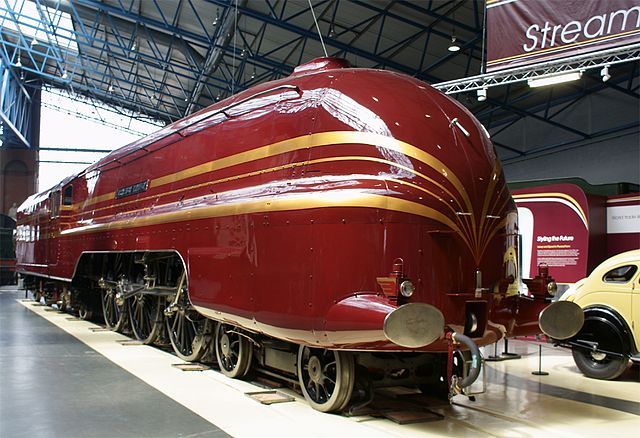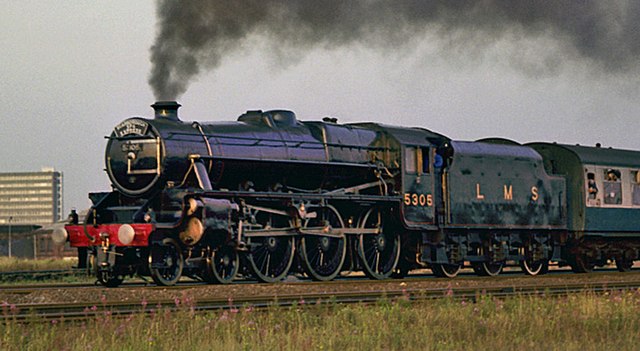The London, Midland and Scottish Railway (LMS) Coronation Class is a class of express passenger steam locomotives designed by William Stanier. They were an enlarged and improved version of his previous design, the LMS Princess Royal Class, and on test were the most powerful steam locomotives ever used in Britain at 2,511 dbhp. The locomotives were specifically designed for power as it was intended to use them on express services between London Euston and Glasgow Central; their duties were to include the hauling of a proposed non-stop express, subsequently named the Coronation Scot. The first ten locomotives of the Coronation class were built in a streamlined form in 1937 by the addition of a steel streamlined casing. Five of these ten were specifically set aside to pull the Coronation Scot. Although a later batch of five unstreamlined locomotives was produced in 1938, most of the ensuing Coronation class were outshopped as streamliners. From 1944 until production ended in 1948, all-new engines were built in unstreamlined form and all the streamliners had their casings removed. The last of the 38 locomotives was completed in 1948.

No. 6229 Duchess of Hamilton
Streamlined version as originally built
The lack of a handrail on the tender shows that this is an ex-streamlined Type A. The locomotive is No. 46225 Duchess of Gloucester photographed in 1961, so the table below shows that the tender is No. 9799.
No. 6233 Duchess of Sutherland in preservation turned out in LMS Black.
Sir William Arthur Stanier, was a British railway engineer, and was chief mechanical engineer of the London, Midland and Scottish Railway.
LMS Stanier 5P5F 4-6-0 'Black Five' class locomotive number 5305
LMS Coronation Class 4-6-2 No 6233 Duchess of Sutherland






